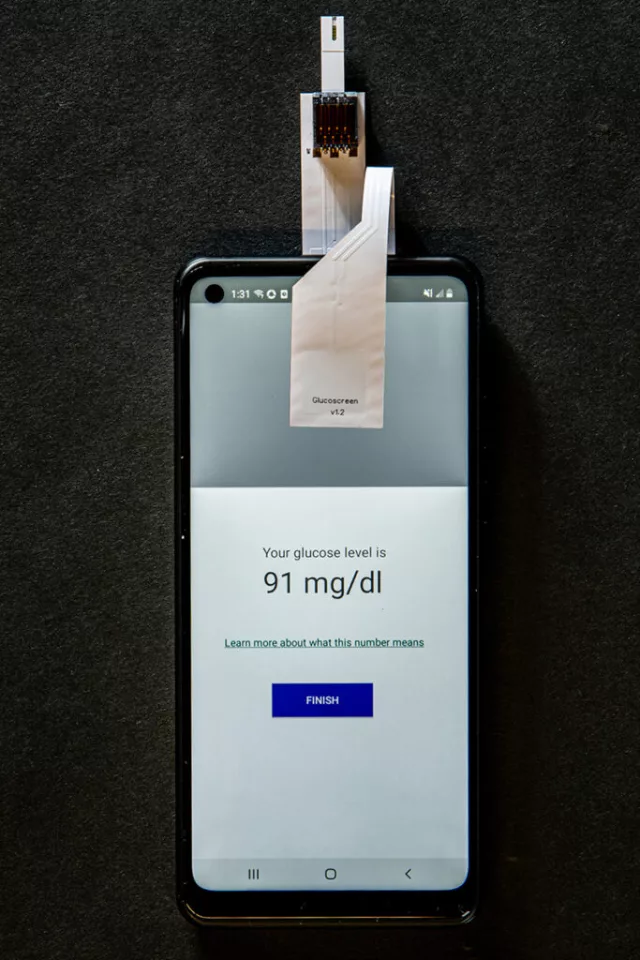Around 96 million American adults suffer from prediabetes – which is more than one in three – but for a vast majority it's undetected. Current diagnosis requires a clinical blood sugar test or an at-home glucometer device. With access and cost a huge factor in testing for a condition that can have no symptoms for years, it’s no surprise that 80% of sufferers aren’t diagnosed until it develops into more serious issues such as type 2 diabetes.
Now, inexpensive and easy routine checking could be around the corner, with researchers from the University of Washington (UW) designing a system called GlucoScreen that uses existing smartphone technology and redesigned test strips to accurately measure blood sugar levels for early prediabetes detection.
People 45 and over, those who have a family member with type 2 diabetes, those who have a history of gestational diabetes or are overweight are at higher risk of prediabetes. Fortunately, if the condition is detected early enough, such as through pre-emptive, routine testing, it can be reversed with physical activity and dietary changes.
"In conventional screening a person applies a drop of blood to a test strip, where the blood reacts chemically with the enzymes on the strip,” said lead author Anandghan Waghmare, from the Paul G. Allen School of Computer Science & Engineering at UW. “A glucometer is used to analyze that reaction and deliver a blood glucose reading.
"We took the same test strip and added inexpensive circuitry that communicates data generated by that reaction to any smartphone through simulated tapping on the screen,” he added. “GlucoScreen then processes the data and displays the result right on the phone, alerting the person if they are at risk so they know to follow up with their physician."
The system sees the user adhere each end of a test strip to the back of their phone, covering the camera flash. After pricking their finger with a lancet, much like with a regular test, a drop of blood is applied to the biosensor at the end of the test strip. With the help of photodiodes powered by the phone’s flash, data from the blood analysis is transferred to the device, where in-app machine learning screens the information and calculates a blood glucose reading.

The system doesn’t feature any complicated electronics, nor does it require Wi-Fi or Bluetooth. And the study’s results suggest the GlucoScreen system offers around the same accuracy to the current at-home glucometer devices.
"Because we use the built-in capacitive touch screen that's present in every smartphone, our solution can be easily adapted for widespread use,” said co-author Jason Hoffman, also from the Allen School at UW. "We’ve designed it to be 'plug and play.' You don’t need to root the phone – in fact, you don’t need to do anything with the phone, other than install the app. Whatever model you have, it will work off the shelf."
While just a prototype, with further clinical studies and research into manufacturing required, it’s a promising addition to the burgeoning technology landscape allowing people to take their health screening into their own hands – quite literally.
"One of the barriers I see in my clinical practice is that many patients can't afford to test themselves, as glucometers and their test strips are too expensive,” said co-author Dr Matthew Thompson, professor at the UW School of Medicine. “And it's usually the people who most need their glucose tested who face the biggest barriers.”
The research was published in the journal Proceedings of the ACM on Interactive, Mobile, Wearable and Ubiquitous Technologies.
See just how GlucoScreen works in the video below:
Source: University of Washington






